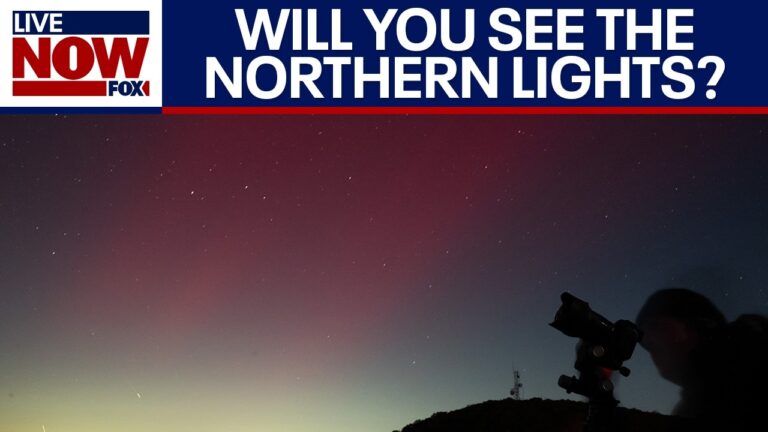Video at the bottom!
In today’s live segment, Austin Westfall welcomes viewers back, discussing an exciting astronomical event on the horizon. He introduces the topic with a focus on the Northern Lights, acknowledging that while the image on screen isn’t live, many in the audience might get a chance to witness this spectacular celestial display.
Austin mentions the potential for a severe geomagnetic storm early next week, which could allow many Americans, possibly even those in the Deep South, to see the Northern Lights. He references the National Oceanic and Atmospheric Administration’s Space Weather Prediction Center, hinting at a significant weather event that’s drawing attention.
Rob Steinberg, an expert from NOAA, joins the conversation to clarify what a G4 level storm means. He explains that this scale runs from 1 to 5, with G4 indicating a severe storm. He emphasizes that such occurrences provide a greater chance to see the Aurora Borealis, though typically in a less intense form for those further south.
The discussion moves towards how often these storms occur. According to Rob, over an 11-year solar cycle, there are about 100 instances, making them relatively uncommon yet not exceedingly rare. Austin highlights that the beauty captured in images might not always be visible to the naked eye but can be documented with cell phones, especially using long exposure techniques.
They delve into the science behind these geomagnetic storms, explaining that they originate from the Sun. When solar material is ejected, it travels to Earth, where it interacts with the Earth’s magnetic field. This interaction is what leads to the auroral displays.
Austin raises concerns about the potential dangers of such storms. Rob reassures that while the general public will primarily benefit from seeing the auroras, there are concerns for technical sectors like power distribution and satellites, which must be prepared for the challenges posed by geomagnetic storms.
The conversation shifts to discussing how these storms can affect power infrastructure. Rob illustrates that as the Earth’s magnetic field is influenced, it can induce unexpected currents in power lines, posing a challenge for power companies that need to mitigate these impacts.
They then explore how predictions are made regarding these storms. Rob explains that while they can observe solar events as they leave the sun, real understanding only comes when they reach a satellite about a million miles from Earth.
Towards the conclusion, Austin and Rob reflect on personal experiences with the Northern Lights, emphasizing the importance of being in darker locations away from urban light pollution to get the best view. Rob notes that those further north are at a distinct advantage.
Austin encourages viewers to share any sightings on social media, creating an interactive and engaging atmosphere around this anticipated natural event. The segment wraps up with a call for viewers to take photos if they witness the Northern Lights and to share their experiences with the show.


